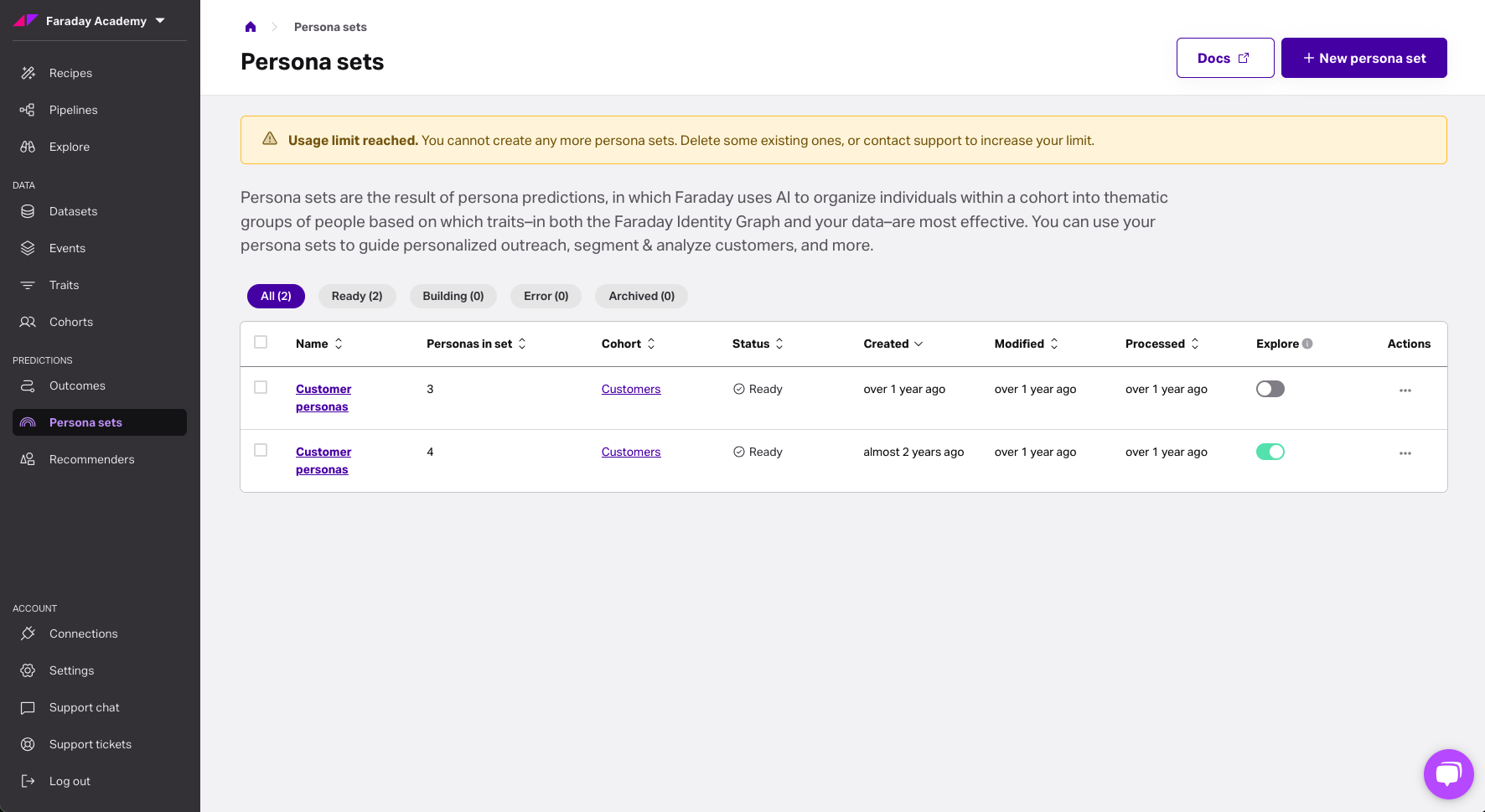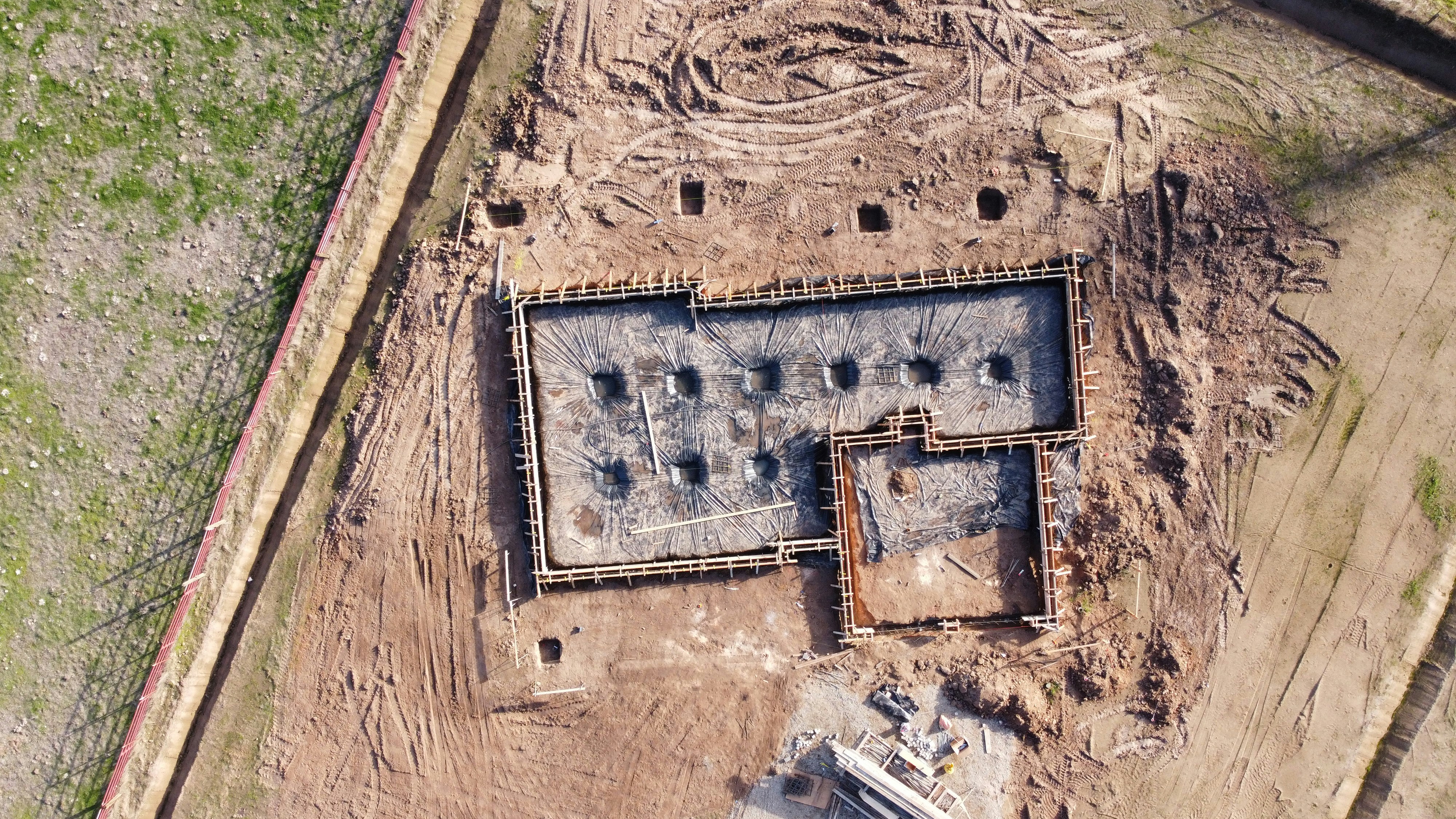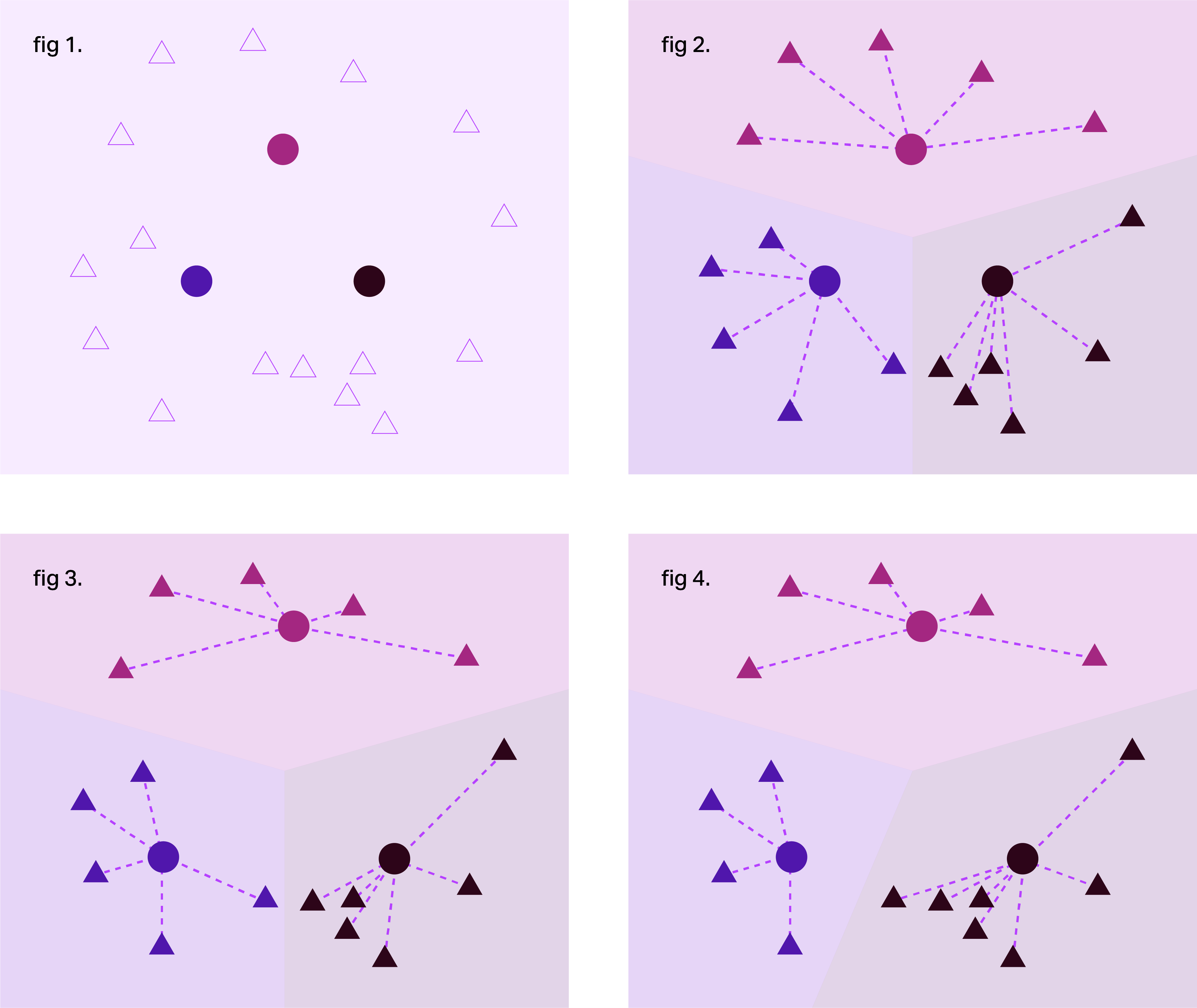When to update your personas - and why you probably shouldn’t
A solid persona set should be built to last—because stability, not constant revision, is what makes it most valuable for long-term strategy.



This post is part of a series called Getting started with Faraday that helps to familiarize Faraday users with the platform
Not long ago, a client asked us a simple question: "When do we need to update our personas?" They had just launched a new campaign, were seeing some shifts in engagement, and started wondering if maybe their whole persona set needed a refresh.
It’s a fair question—and a tempting one. When you’re working with data-driven segments, it’s easy to assume they should constantly change. But our answer surprised them.
“Probably not.”
Faraday Personas serve as the foundation that a range of predictions can be built on. They help you organize your customer base in a way that’s strategic, insightful, and easy to act on. But like any good foundation, you want to get it right before you start building on top of it.
Sure, things can change. Maybe you want to add an extension, knock out a wall, or open up the kitchen. But those changes are a lot easier—and less disruptive—if the foundation is solid and built to last.
So when do you actually need to revisit your personas?
The short answer: rarely. Once you’ve landed on an architecture that works, stick with it.
Let’s unpack why—because the logic behind that “rarely” is more interesting than it sounds.
How personas are generated: a quick look at k-means
Just a second there—we are going to tell you when to update your personas, but first, in the spirit of explainability, we wanted to give you a little more context about how these personas are computed to begin with. Under the hood, Faraday uses a variant of a decades-old algorithm called “k-means clustering” to create personas.
Here’s how it works:
- Fig 1: The algorithm starts by placing random center points across your dataset—think of these as placeholders for where clusters might end up. It’s easiest to visualize this in two dimensions—like income and age (as shown below)—but in practice, our models actually cluster across seven dimensions at once.
- Fig 2: Each customer record is assigned to the center point it’s closest to, using straight-line (Euclidean) distance. This step groups people based on proximity to those initial centers.
- Fig 3: Once everyone is grouped, the center points “move” to the average location of their assigned members—this is the re-centering step.
- Fig 4: After the centers update, each customer is reassessed and may be reassigned to a new group based on updated distances. The process repeats—reassign, recenter—until the centers stop moving.
That final clustering defines your persona set.
The result is a set of personas that’s grounded in data, tuned to your strategy, and stable enough to support real decision-making.
Personas are a framework, not a forecast
A Persona set in Faraday’s platform is a structured way to segment your customer base. It’s not a supervised prediction model in itself—but it is still predictive. Built using unsupervised machine learning, Persona sets identify natural clusters in your customer data based on shared behaviors and traits. These clusters don’t predict a specific future outcome, but they do reveal the underlying structure in your audience—patterns you can act on.
In that way, Personas become a foundation for other predictions. By dividing your audience into meaningful, behavior-based clusters, you create a consistent lens through which you can view performance, target messaging, and even optimize creative strategies.
That’s why it’s important to get it right. And sometimes, getting there takes a few iterations:
- You may need to refine who you're segmenting (e.g. maybe you only want to include actual buyers, not people who just requested a sample).
- You might experiment with which traits produce the most useful clusters (like dropping gender if it isn’t meaningful for your business).
- You’ll need to choose how many Personas your team can support operationally—four might be optimal, but maybe three is more manageable.
- You might decide to limit the data to only recent customers if your business has changed significantly over time.
These early decisions shape your architecture. But once you're confident in the structure—and it's aligned with your business goals—you shouldn't need to change it often.
In other words, once that foundation is poured and leveled, you’re ready to build. And just like with a house, it's much easier to make layout decisions or room additions early—before the drywall goes up and the furniture’s moved in. After that, you're not just shifting strategy; you're tearing up the floorboards. So it's worth taking the time to get it right.
Stability matters
So now that we understand where the Personas come from and what they do, we can start to talk about why or why not to consider updating them.
And here’s the upside of not tinkering: consistency gives you clarity.
If your Persona structure stays stable, you can actually see how your audience shifts over time. Maybe one segment’s getting smaller. Maybe another’s growing thanks to a campaign you launched six months ago. Maybe a new customer type is starting to show up in a meaningful way.
None of that is obvious if you keep changing the structure. You need that solid foundation if you want to track change.
Think of it like this: if you renovate your house every year, you’ll never really know whether the neighborhood’s changing—or if you’re just seeing different views through different windows.
When you should consider a change
All that said, sometimes it’s the right move to rebuild.
Here are the situations where it makes sense:
- Gradual obsolescence. One of your Personas slowly fades out over time. They’re no longer showing up in your data, and that segment just isn’t relevant anymore. It might be time to re-cluster and rebalance the set.
- Big business changes. Think mergers, acquisitions, or divestments. If your business fundamentally changes—like Hasbro acquiring Wizards of the Coast—you’re suddenly dealing with a whole new audience (hello, D&D players). That’s not a tweak. That’s a structural shift.
These are rare, but when they happen, it’s worth stepping back and reassessing.
Build it to last
At the end of the day, your Persona set isn’t just a report—it’s the foundation your customer strategy is built on. It supports everything: creative, targeting, product design, lifecycle messaging, and more.
That’s why it’s built to be stable and consistent. You don’t want to tear up the foundation unless you have a very good reason.
And when that moment does come—whether it’s time for a renovation or a full rebuild—Faraday’s team is here to help you do it the right way.
But most of the time? You’re better off getting it right the first time and building on what’s already solid.

Andy Rossmeissl
Andy Rossmeissl is Faraday’s CEO and leads the product team in building the world’s leading context platform. An expert in the application of data analysis and machine learning to difficult business challenges, Andy has been running technology startups for almost 20 years. He attended Middlebury College and lives with his wife in Vermont where he lifts weights, makes music, and plays Magic: the Gathering.

Ben Rose
Ben Rose is a Growth Specialist at Faraday, where he focuses on turning the company’s work with data and consumer behavior into clear stories and the systems that support them at scale. With a diverse background ranging from Theatrical and Architectural design to Art Direction, Ben brings a unique "design-thinking" approach to growth marketing. When he isn’t optimizing workflows or writing content, he’s likely composing electronic music or hiking in the back country.

Ready for easy AI?
Skip the ML struggle and focus on your downstream application. We have built-in demographic data so you can get started with just your PII.


